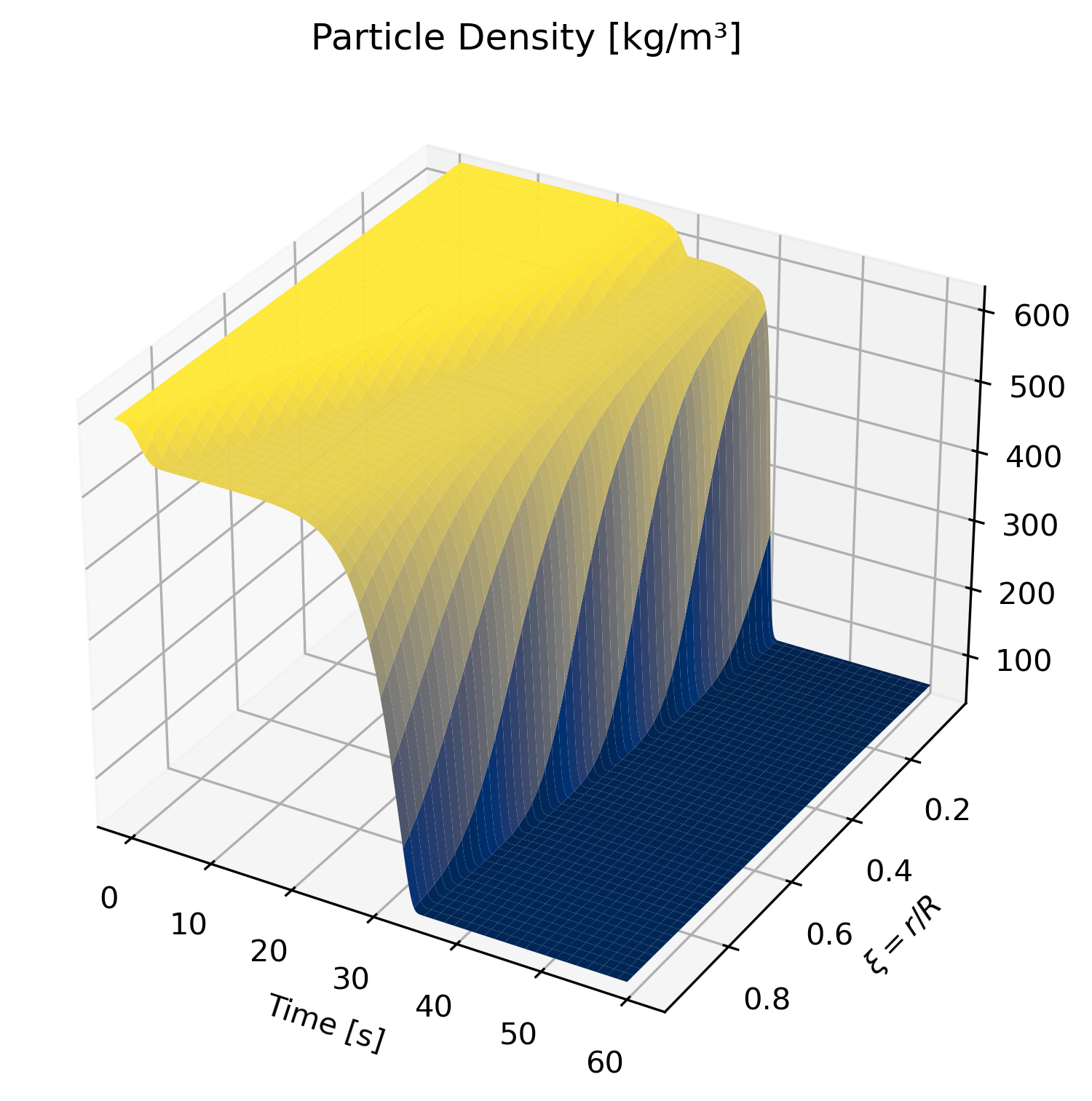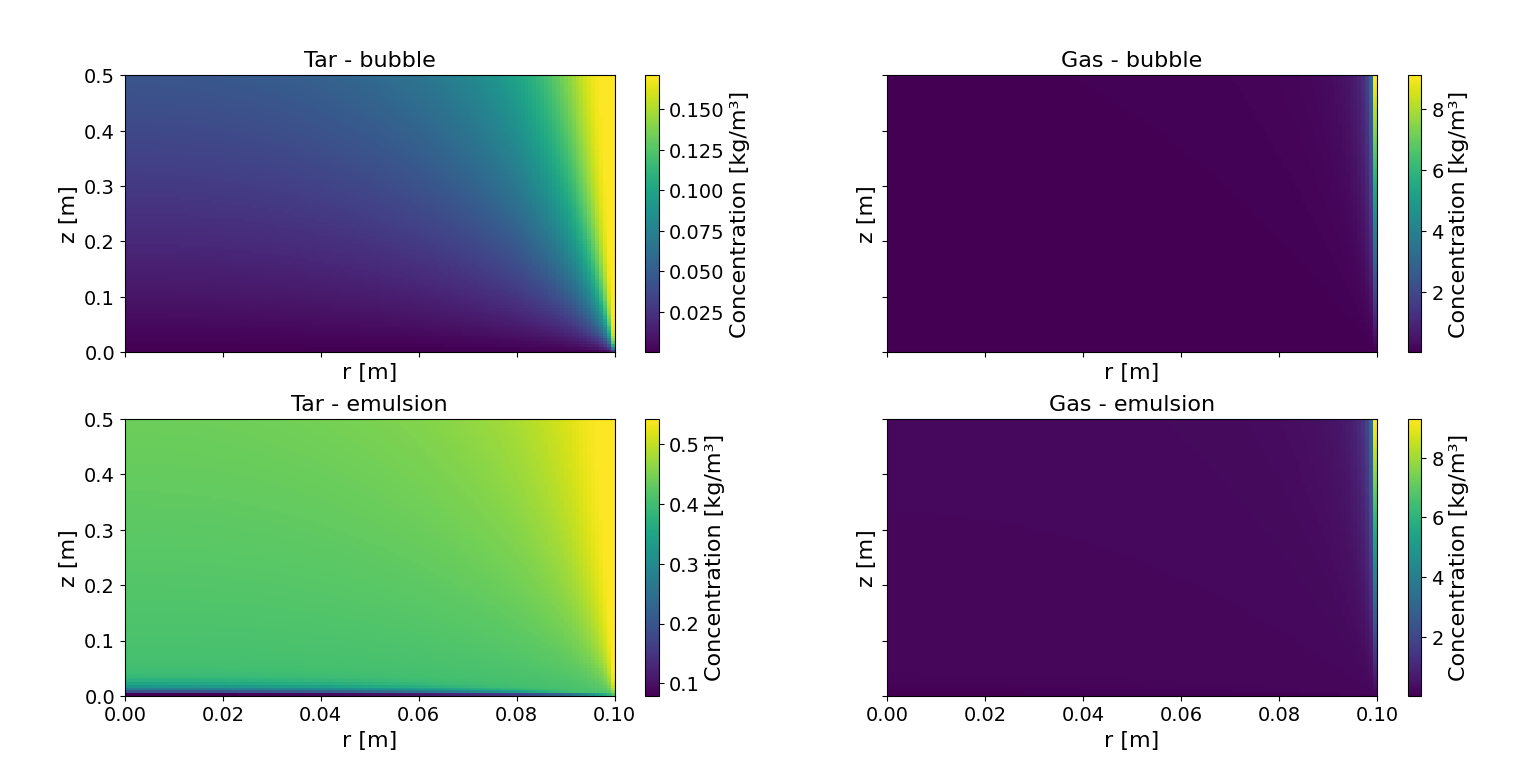Intra-Particle Decomposition
The particle-scale model captures the progressive loss of biomass density due to drying, tar formation, and gas evolution. This 3D surface plot shows the evolution of solid-phase density over time and radial position. A dense biomass core remains intact until local temperature and reaction rates enable full conversion, resulting in the clear propagating decomposition front.

